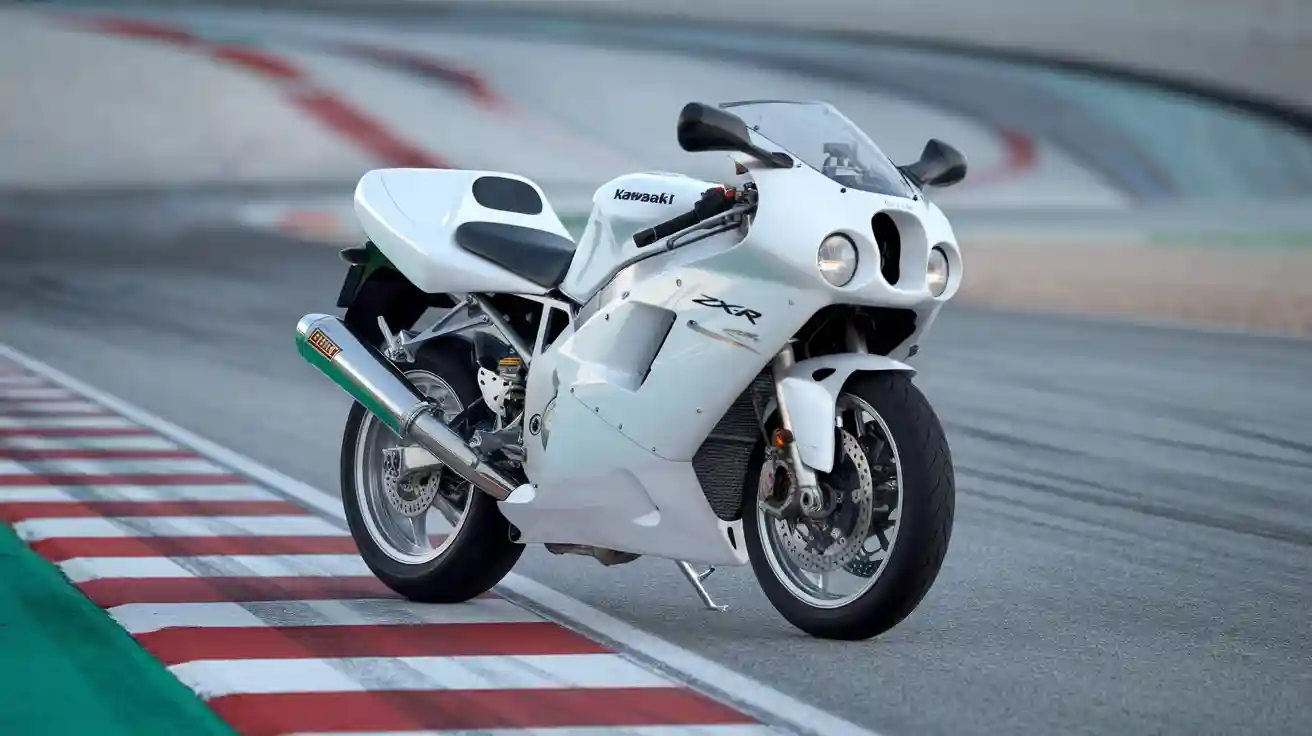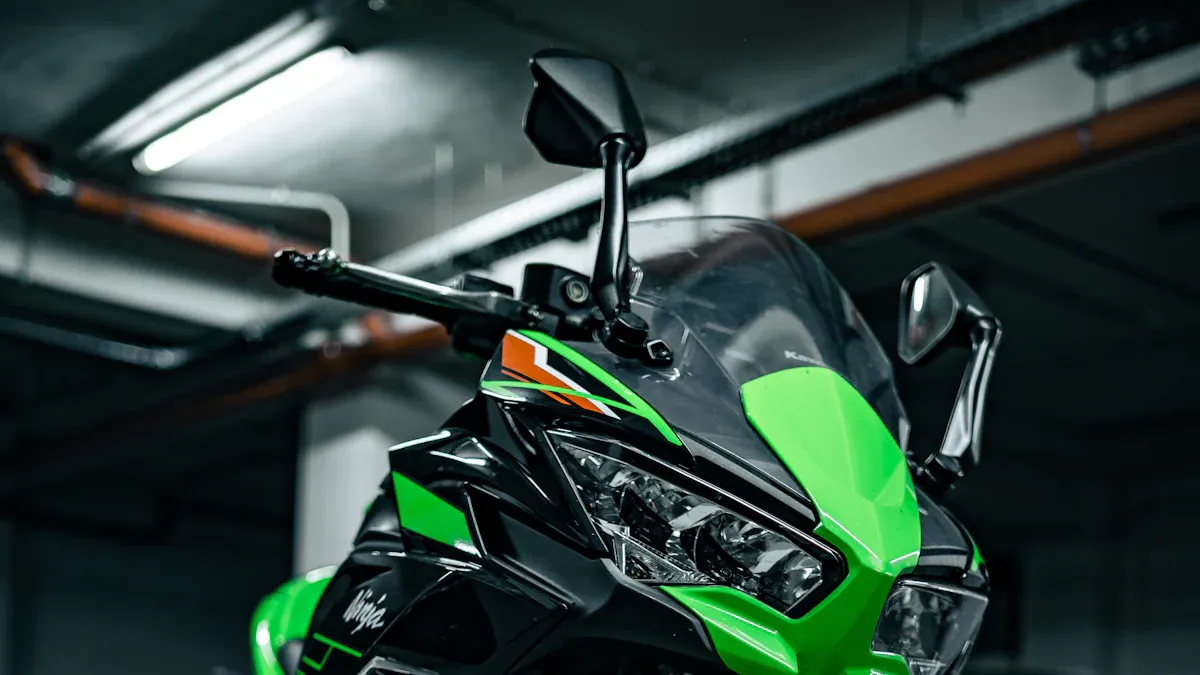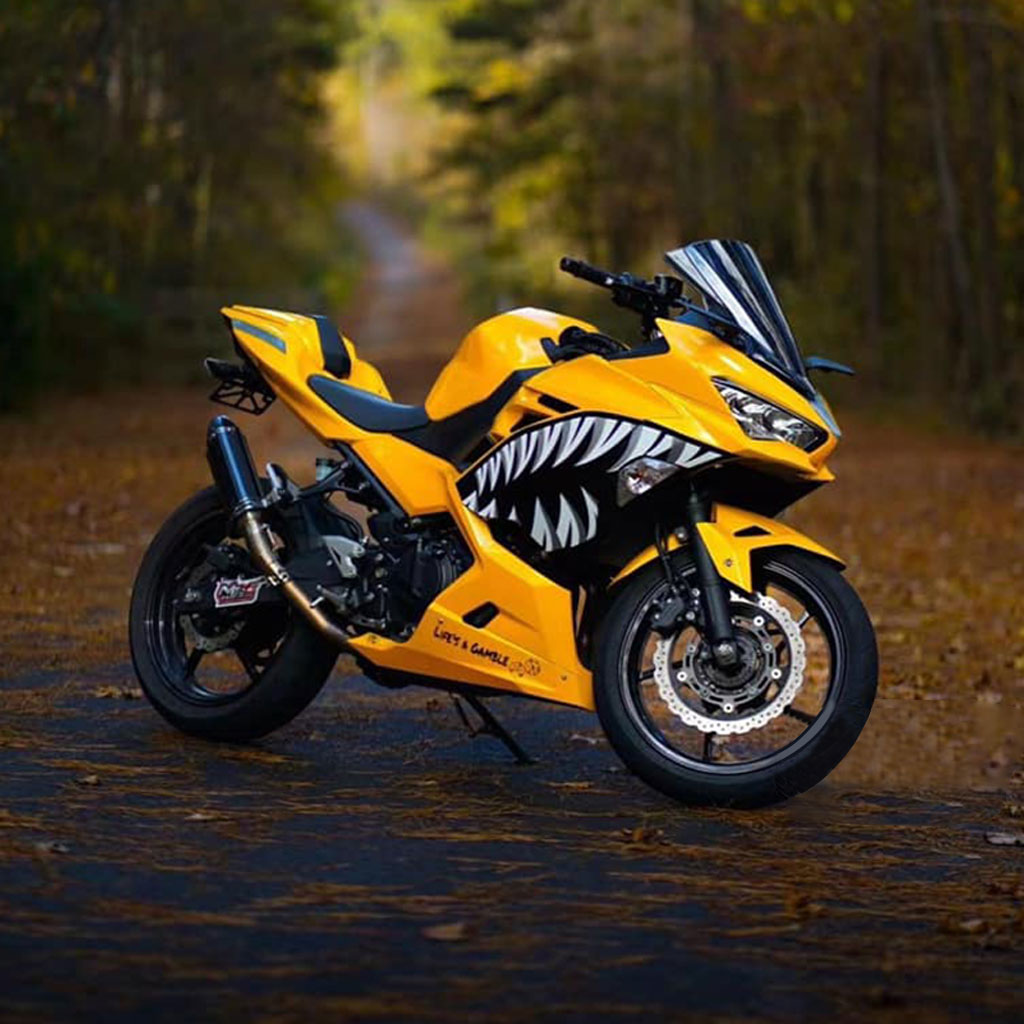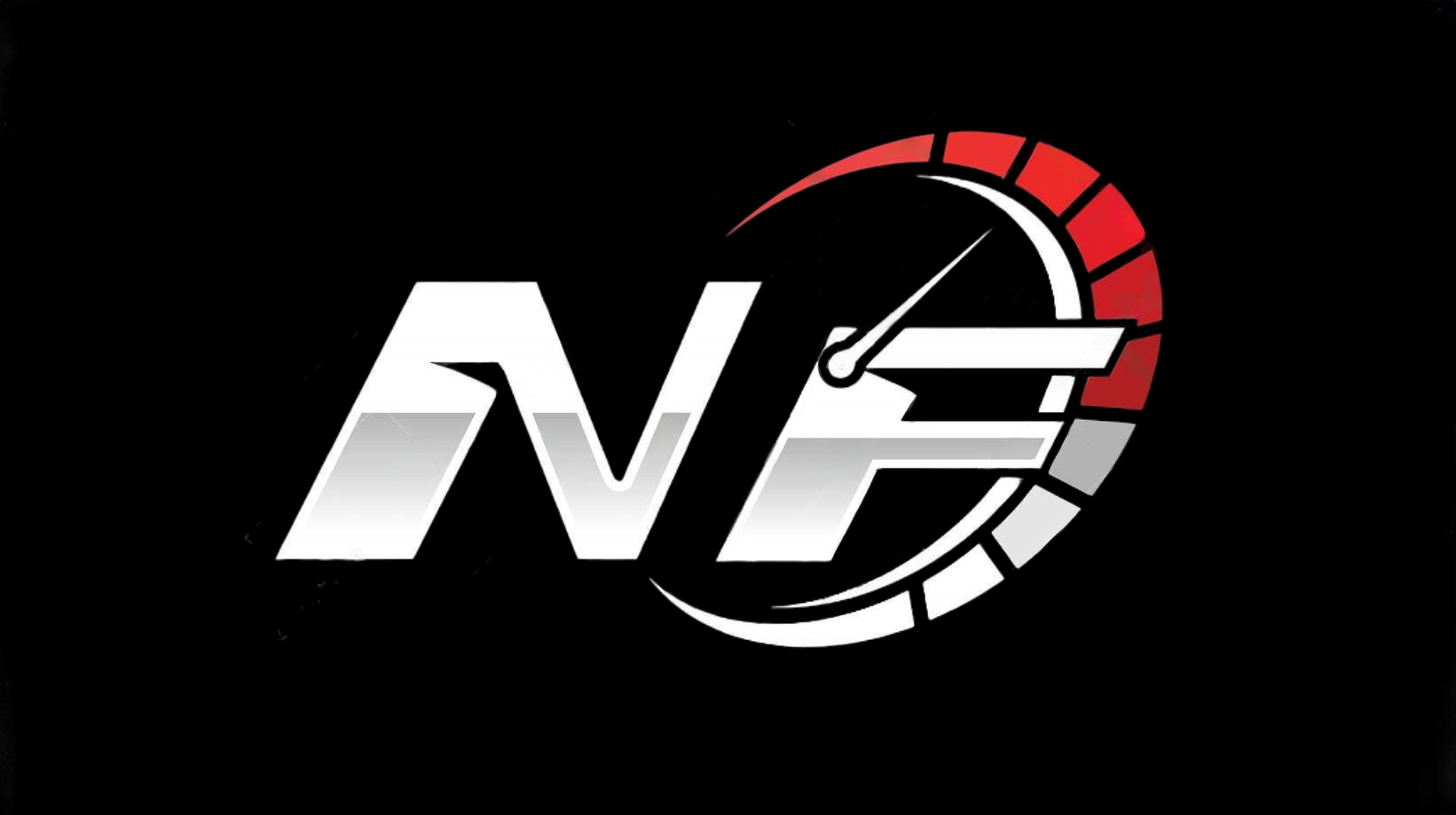Why the 2007 ZX6R Kawasaki Became a Benchmark for Track Performance

The zx6r kawasaki 2007 changed the world of 600cc supersport motorcycles. Riders saw a new level of track speed and control. This sportbike brought new excitement to the supersport class. Many experts in motorcycle history point to 2007 as a turning point. The zx6r kawasaki 2007 led the way for future sportbike designs. Its arrival raised the standard for track performance in the 600 cc supersport market.
Key Innovations of the zx6r kawasaki 2007
Chassis and Handling Breakthroughs
Kawasaki designed the 2007 ZX6R with a focus on agility and stability. The engineers created a new chassis that improved both rigidity and weight distribution. This change allowed riders to feel more connected to the bike during high-speed corners on the track. The frame used lightweight materials, which made the motorcycle easier to maneuver. Riders noticed that the bike responded quickly to steering input, giving them confidence in tight turns.
The 2007 ZX6R featured a compact frame that helped with mass centralization. By moving key components closer to the center, Kawasaki improved the balance of the motorcycle. This design made the bike feel lighter and more predictable during aggressive riding. The improved chassis also reduced flex, which increased stability at high speeds. Riders found that the handling set a new standard for the 600cc class.
Note: The 2007 ZX6R's chassis design helped many riders achieve faster lap times and smoother transitions between corners on the track.
Engine Redesign and Power Delivery
Kawasaki introduced a completely new engine for the 2007 ZX6R. For the first time in ten years, the engine received a full redesign. The new 599cc engine was smaller in both length and width by 40mm, which improved rigidity and allowed for better placement within the frame. The engineers used short-skirt forged pistons, smaller piston pins, and revised rod bearings to reduce weight and increase strength. These changes made the engine more reliable under the stress of track riding.
The engine featured a new crankshaft with a modified flywheel mass. This update improved traction and made the power delivery smoother. Kawasaki also changed the cam profiles and enlarged the intake valves from 24.0mm to 26.5mm. These upgrades boosted low to mid-range torque, making the bike more responsive when exiting corners on the track. The exhaust valve angle and polished intake ports increased airflow, which helped the engine breathe better and produce more power.
Kawasaki equipped the 2007 ZX6R with advanced fuel injection and ignition systems. The digital fuel injection system used shorter throttle bodies and ultra-fine atomizing injectors. These features improved combustion efficiency and made the engine more responsive. The TCBI ignition system, managed by a high-speed 32-bit ECU, provided precise control over spark timing. This technology helped the engine deliver consistent power across the rev range.
- Key engine improvements included:
- 599cc displacement for compliance with racing rules
- Shorter and lighter engine design for better mass centralization
- Strengthened internals for durability
- Enlarged intake valves and revised cam profiles for increased torque
- Advanced fuel injection and ignition mapping for smooth power delivery
- Six-speed cassette transmission with adjustable slipper clutch for quick gear changes
The 2007 ZX6R engine produced a strong midrange, making it easier for riders to accelerate out of corners. The power delivery felt smooth and predictable, which helped riders maintain control on the track. Even though the engine had a smaller displacement than previous models, it remained competitive in both horsepower and torque.
| Feature/Advancement | Description |
|---|---|
| Digital Fuel Injection | Shorter throttle bodies and smaller bore for better mid-range torque |
| Ultra-fine Injectors | Improved combustion and lower fuel use |
| High-speed ECU | Precise engine control and spark timing |
| Magnesium and Titanium Parts | Reduced weight for better agility |
| One-piece Throttle Body | Consistent airflow and power output |
Suspension and Braking Enhancements
The 2007 ZX6R came with fully adjustable suspension, allowing riders to fine-tune the bike for different track conditions. The front forks and rear shock could be adjusted for preload, compression, and rebound. This flexibility gave riders the ability to set up the suspension for maximum grip and comfort. The advanced suspension system helped the bike stay stable during hard braking and fast cornering.
Kawasaki also upgraded the braking system. The 2007 ZX6R featured radial-mounted brake calipers, which provided stronger and more consistent stopping power. The brakes gave riders confidence when entering corners at high speed. The bike also included a slipper clutch, which reduced rear-wheel hop during aggressive downshifting. This feature made the bike easier to control on the track, especially during rapid deceleration.
The maintenance schedule for the 2007 ZX6R reflected its race-ready design. Riders needed to perform regular oil changes, air filter replacements, and brake fluid checks to keep the bike performing at its best. The advanced components required careful attention, but they also contributed to the bike's reputation for reliability and performance.
| Maintenance Item | Interval |
|---|---|
| Engine oil & filter | Annually |
| Air cleaner element | Every 18,000 km (11,250 mi) |
| Coolant & radiator hoses | Every 3 years |
| Brake fluid | Every 2 years |
| Brake hoses & rubber parts | Every 4 years |
| Chain lubrication | Every 600 km (400 mi) |
Tip: Regular maintenance ensures the suspension and braking systems continue to deliver top-level performance on the track.
Comparison to Previous ZX6R Models
Major Changes from Earlier Generations
The zx6r kawasaki 2007 marked a big shift in the 600cc supersport world. Kawasaki made several important changes that set this model apart from earlier versions. Riders noticed these updates right away on the track and in daily use.
- Kawasaki moved to a 599 cc engine, leaving behind the 636 cc option from previous years. This change made the bike fit better into 600 cc supersport racing classes.
- The 2007 model kept the under-seat exhaust, which gave it a unique look and sound. Later models switched to a side exhaust for better weight balance.
- Many riders felt the 2007 engine had less bottom-end torque than the older 636 cc models. This made the bike feel more track-focused and less street-friendly.
- The 2007 version acted as a bridge between older designs and the big updates that came in 2009, like lighter engine parts and new suspension technology.
Note: The 2007 model was the last zx6r to feature the under-seat exhaust, making it special among 600cc supersport bikes.
Track Performance Improvements
Kawasaki designed the zx6r kawasaki 2007 to shine on the track. The company focused on making the bike lighter, more compact, and more responsive. The changes helped riders push harder in corners and feel more control at high speeds.
| Aspect | 2006 ZX-6R 636cc Model | 2007 ZX-6R 599cc Model |
|---|---|---|
| Engine Displacement | 636cc | 599cc (redesigned from crankcase up) |
| Power Output | 130 hp (136 hp with ram air) at 14,000 rpm | 125 hp at 14,000 rpm |
| Torque | 7.2 mkg (approx. 70.6 Nm) at 11,500 rpm | 66 Nm at 11,700 rpm |
| Dry Weight | Approx. 164-167 kg | 167 kg |
| Power-to-Weight Ratio | Approx. 1.28 kg/hp | Incredible and race-oriented |
| Aerodynamics | Smoother, elegant, profiled for efficiency | Aggressive, track-tuned styling |
| Design Focus | Street use with aerodynamic refinement | Compactness, lighter design, track performance |
The 2007 engine, though smaller, used a new design to keep power high and weight low. The bike’s aggressive, track-tuned bodywork improved aerodynamics for better speed and control. Riders found the 2007 model more track-focused than before, with a sharper feel in corners and better stability at high speeds. The 600 cc supersport class saw a new level of performance, making the zx6r kawasaki 2007 a favorite for racers and track-day fans. The bike’s engine, suspension, and brakes worked together to deliver a true supersport experience.
Tip: Riders who wanted a pure 600cc supersport for the track often chose the 2007 model for its balance and sharp handling.
zx6r kawasaki 2007 as a Category-Defining Sportbike

Setting New Standards in the Supersport Segment
The zx6r kawasaki 2007 changed what riders expected from a category-defining sportbike. Kawasaki engineers built a compact and lightweight engine with large intake valves and a small combustion chamber. This design helped the bike reach high speeds and quick acceleration. The cassette transmission allowed racers and mechanics to change gear ratios quickly, making the bike easy to service at the track. Kawasaki also brought the slipper clutch to the middleweight supersport class, which improved safety and control during hard downshifts.
The frame balanced stiffness and flex, so the bike could absorb bumps while leaned over in corners. The exhaust pipe ran through the swingarm, which lowered the bike’s center of gravity and made it easier to handle. Suspension upgrades included fork springs at the bottom of the tubes, which reduced oil foaming and improved performance. The braking system used radial-mounted calipers with four pads and four pistons, giving the bike strong and stable stopping power. The high redline of 16,500 rpm and the European ECU map showed the bike’s focus on racing.
The zx6r kawasaki 2007 set new benchmarks for engine size, chassis design, braking, and easy maintenance. Riders saw it as a street-legal race bike that raised the bar for all supersport motorcycles.
Rider and Industry Response
Motorcycle journalists and riders noticed the zx6r kawasaki 2007 right away. Reviewers said the bike combined the best features of its rivals. The chassis felt almost as good as the Yamaha R6, and the engine delivered strong power across a wide range. Handling was sharp and balanced, with steering that felt precise and stable. The brakes stood out as the best in the class, offering excellent power and feel.
Some riders found the suspension harsh on rough roads, especially for lighter people. The low handlebars made the riding position aggressive, which could cause wrist fatigue during long rides. Still, many riders called it the most comfortable supersport in its class for weekend or canyon rides. The bike inspired confidence, letting riders push harder and faster on the track. Many praised its strong power delivery, especially at high speeds, and its better torque for street use compared to other 600cc sportbikes.
-
Riders liked:
- Confidence-inspiring handling
- Strong brakes
- Comfortable ride for a supersport
- Good power and torque for both track and street
-
Riders disliked:
- Tall first gear
- Suspension stiffness on the street
- Less fun for daily commuting
Most riders and experts agreed that the zx6r kawasaki 2007 stood out as a true category-defining sportbike in the supersport segment.
Lasting Legacy of the zx6r kawasaki 2007
Influence on Later Kawasaki Models
The zx6r kawasaki 2007 set a new direction for Kawasaki’s supersport lineup. Kawasaki engineers introduced a compact engine with a stacked gear arrangement. This design improved mass centralization and made the bike more responsive on the track. The frame, swingarm, and suspension also received updates for better handling and stability. These changes created a race-oriented motorcycle with a high power-to-weight ratio. The 2007 model’s aggressive aerodynamics and rider-focused chassis became the foundation for the 2008 ZX-6R, which saw only minor updates. Kawasaki’s success in major racing events, such as the Daytona 200 and AMA Supersport Championship, proved the value of these innovations. Later models, like the 2009 version, continued to refine this platform. Engineers reduced weight, improved mid-range engine performance, and enhanced chassis handling. The focus on mass centralization, aerodynamic efficiency, and engine refinement started with the 2007 model and shaped Kawasaki’s supersport philosophy for years.
The 2007 model’s approach to lightweight design and track-focused engineering influenced every Kawasaki supersport that followed.
Enduring Popularity Among Track Enthusiasts
Track enthusiasts continue to value the 2007 ZX6R for its performance and reliability. The model holds strong resale value, often increasing with each new owner. This trend stands out compared to other sportbikes from the same era, where prices can vary or lack clear reasons for changes. The recent relaunch of the ZX6R at a competitive price has kept interest high and helped maintain its value. Riders see the ZX6R as a sought-after motorcycle, sometimes even calling it overpriced because of its demand.
Many track riders choose the 2007 ZX6R for its easy customization. Popular modifications include the Jumper Mod, which boosts engine power by bypassing the exhaust butterfly valve. Aftermarket exhaust systems, shorty levers, and frame sliders are common upgrades. Riders also install threaded brake lines for better braking, 520 chain conversion kits for improved drivetrain performance, and fuel controllers to optimize engine output. Some move the rear brake reservoir for a cleaner look or add custom LED lighting for style. These changes help riders get the most from their supersport on the track and show the bike’s lasting appeal.
- Common modifications among track-focused riders:
- Jumper Mod for extra horsepower
- Aftermarket exhausts
- Shorty levers and frame sliders
- Upgraded brake lines and chain kits
- Fuel controllers for engine tuning
Track enthusiasts appreciate the 2007 ZX6R for its blend of performance, reliability, and easy upgrades. The model remains a favorite in the supersport community.
The 2007 ZX6R Kawasaki continues to stand out as a sportbike that set new standards for track performance. Experts highlight its powerful engine, smooth power delivery, and precise chassis as reasons it remains a top choice for riders who value speed and control on the track. Many reviewers note that this sportbike influenced rider preferences and shaped the supersport market for years.
Riders and industry experts agree: the 2007 ZX6R Kawasaki raised the bar for what a track-focused machine can achieve.
FAQ
What makes the 2007 ZX6R Kawasaki special for track riders?
The 2007 ZX6R Kawasaki offers a lightweight frame, strong brakes, and a smooth engine. Riders find it easy to handle on the track. Many experts say it set new standards for 600cc sportbikes.
How does the 2007 ZX6R compare to other bikes in a supersport shootout?
The 2007 ZX6R often ranks high in a supersport shootout. Riders praise its balance, power, and sharp handling. It competes well against other top 600cc sportbikes from the same era.
Is the 2007 ZX6R Kawasaki good for beginners?
The 2007 ZX6R Kawasaki suits riders with some experience. Its power and sharp handling may challenge new riders. Many experts recommend it for those who want to improve their track skills.
What are common upgrades for the 2007 ZX6R Kawasaki?
Riders often add aftermarket exhausts, frame sliders, and upgraded brake lines. Some choose fuel controllers or chain kits. These upgrades help improve performance and safety on the track.
Does the 2007 ZX6R Kawasaki need special maintenance?
The 2007 ZX6R Kawasaki needs regular oil changes, brake checks, and chain care. Riders should follow the maintenance schedule. Proper care keeps the bike reliable and ready for track days.
See Also
What Makes The Kawasaki ZX10RR Better Than ZX10R
Comparing Race And Street Fairings For Kawasaki ZX-6R
Detailed Analysis Of Kawasaki Ninja 650 Fairing Performance

